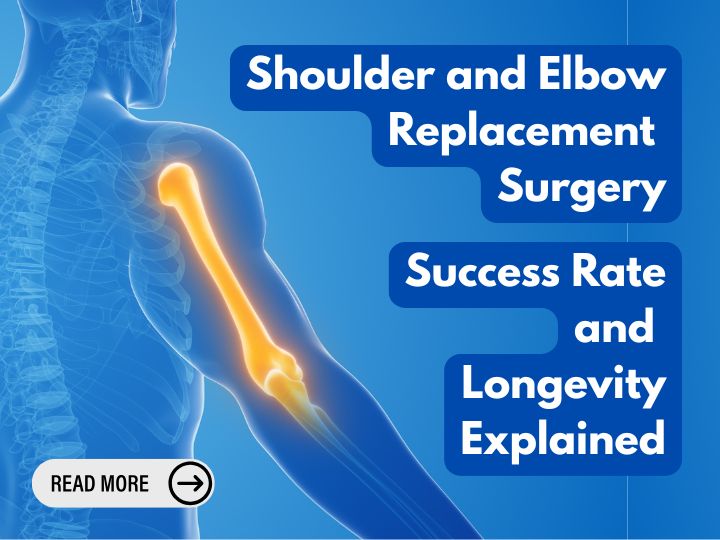By Dr. Vishal Sahni – Orthopedic Surgeon, Shoulder Specialist, London Orthopaedic Clinic, Nagpur
As the monsoon clouds roll over Nagpur and much of India, many people begin to experience increased joint pain—especially in the shoulders, elbows, and hands. This discomfort is not just an old wives’ tale; it’s a real phenomenon that affects countless individuals during the rainy season. Whether you are young or elderly, a working professional or homemaker, the changes in weather can silently aggravate your musculoskeletal system.

As an Orthopedic Surgeon and Shoulder Specialist with 24+ years of experience in India and the UK, I, Dr. Vishal Sahni, have observed a clear pattern: joint pain complaints rise significantly during the monsoon months. At London Orthopaedic Clinic, Dhantoli, Nagpur, we treat a wide range of joint issues, especially related to the upper limbs. This article is your complete guide to understanding why joint pain worsens during the rainy season, what causes it in the shoulder, elbow, and hand, and what you can do to manage and prevent it.
Why Does Joint Pain Worsen in the Rainy Season?
Several environmental and physiological factors contribute to joint discomfort in the monsoon:
- Drop in atmospheric pressure causes tissues to expand, putting pressure on joints.
- Increased humidity leads to joint stiffness and discomfort.
- Cooler temperatures cause muscles to contract, limiting joint mobility.
- Less physical activity due to rain and dampness can cause stiffness and weakening of muscles.
- Increased risk of infections such as viral arthritis during monsoon may lead to temporary or chronic joint pain.
These factors create the perfect storm for those suffering from arthritis, old injuries, or repetitive strain problems.
Shoulder Pain in the Rainy Season
1. Monsoon and Frozen Shoulder
Frozen Shoulder, medically known as Adhesive Capsulitis, becomes more painful and stiff during the rainy season. Many patients report increased pain in the early mornings or after long periods of inactivity.
Symptoms:
- Sharp or dull aching pain in the shoulder
- Difficulty raising the arm
- Pain during sleep on the affected side
Why it gets worse in monsoon:
Cold weather and inactivity lead to stiffening of the shoulder capsule. The inflammation becomes more noticeable when the air is damp and pressure drops.
What you can do:
- Perform gentle stretching exercises under guidance
- Use warm compresses to relax muscles
- Visit a shoulder specialist if symptoms persist or worsen
2. Rotator Cuff Pain and Monsoon Discomfort
The rotator cuff is a group of muscles and tendons that stabilize the shoulder. Small injuries or overuse can lead to inflammation, especially in humid conditions.
Triggers during rainy season:
- Lifting buckets of water or wet clothes
- Driving with wet arms or poor posture
- Lack of warm-up before physical tasks
Treatment approach:
- Anti-inflammatory medications under doctor’s advice
- Physical therapy for muscle strengthening
- Ultrasound or MRI if pain persists
Elbow Pain in Monsoon
1. Tennis Elbow and Golfer’s Elbow Flare-Ups
Conditions like Lateral Epicondylitis (Tennis Elbow) and Medial Epicondylitis (Golfer’s Elbow) worsen with weather changes. People engaged in desk jobs or manual labour find these problems more irritating in monsoon.
Symptoms:
- Pain around elbow joint when lifting or gripping
- Swelling and tenderness
- Difficulty in everyday activities like opening doors or jars
Rainy season aggravation reasons:
Moisture affects tendon elasticity. Even slight overuse can trigger pain during this period.
What helps:
- Wearing elbow straps or braces
- Ice packs after activity
- Ergonomic correction at workplace
- Consulting an orthopedic doctor in Nagpur for long-standing cases
2. Elbow Bursitis and Seasonal Infection
Olecranon Bursitis can flare up in rainy season due to increased risk of infections. Bacteria thrive in wet environments, making the bursae (fluid-filled sacs) more prone to infection.
Warning signs:
- Swelling at the back of elbow
- Redness and warmth
- Fever or general fatigue
Action Plan:
- Don’t ignore symptoms assuming it’s just seasonal pain
- Immediate consultation for antibiotics or drainage
- Proper hygiene during monsoon is crucial
Hand and Wrist Pain During Monsoon
1. Monsoon-Triggered Arthritis in Fingers
Rheumatoid arthritis, osteoarthritis, or post-traumatic arthritis often target finger joints. During monsoon, the pain intensifies due to the cold and damp climate, especially in elderly women.
Common complaints:
- Stiff fingers in the morning
- Difficulty holding objects
- Swelling around knuckles
Why it happens:
The synovial fluid inside the joint becomes sluggish in colder temperatures, reducing mobility and increasing friction inside joints.
Prevention & Relief:
- Gentle hand-opening and closing exercises
- Warm oil massage to increase circulation
- Wearing gloves at night or in AC rooms
2. Carpal Tunnel Syndrome Gets Worse
For individuals who spend long hours typing or using a mouse, Carpal Tunnel Syndrome symptoms may get worse in the rainy season.
Symptoms:
- Tingling or numbness in thumb, index, and middle finger
- Wrist pain, especially at night
- Weakness in grip
Monsoon Connection:
The moisture and chill affect nerve conduction. Inflammation due to fluid retention during this season further compresses the median nerve.
What can be done:
- Wrist splints during night
- Avoiding repetitive tasks
- Consulting a hand specialist if symptoms persist
- Nerve conduction studies if diagnosis is unclear
Post-Surgical Joint Pain in Monsoon
Patients who have undergone orthopedic surgeries such as:
- Shoulder arthroscopy
- Elbow ligament repair
- Wrist fracture fixation
often report dull pain or tightness during monsoon. It’s generally due to soft tissue changes, muscle guarding, or minor scar tissue irritation.
Tips for post-surgical patients:
- Continue prescribed physiotherapy exercises
- Use warm showers to ease stiffness
- Do not skip follow-up appointments, especially during monsoon
- Avoid sudden jerky movements or lifting heavy objects
How to Prevent Monsoon-Related Joint Pain?
1. Keep Your Joints Warm and Dry
Wear full-sleeved clothes. Avoid getting drenched. Carry an umbrella and change out of wet clothes immediately.
2. Regular Stretching and Mobility Exercises
Even 10–15 minutes of shoulder rolls, wrist circles, and elbow extensions every morning can keep your joints lubricated.
3. Stay Active Indoors
Even if it’s raining, avoid a sedentary lifestyle. Household chores, yoga, or indoor walks help prevent stiffness.
4. Maintain a Healthy Diet
Include anti-inflammatory foods such as turmeric, ginger, omega-3 rich nuts, and warm soups. Avoid cold drinks or processed foods during monsoon.
5. Don’t Ignore Persistent Pain
If your shoulder, elbow, or hand pain lasts more than a week or restricts your daily life, consult an orthopedic doctor in Nagpur. Early diagnosis and timely intervention prevent complications.
Why Choose London Orthopaedic Clinic, Nagpur?
At London Orthopaedic Clinic, Dhantoli, Nagpur, we combine international expertise with compassionate Indian care. Dr. Vishal Sahni is a renowned orthopedic surgeon and shoulder specialist with two decades of surgical and diagnostic experience in London and India.
Our clinic provides:
- Expert consultation for Shoulder, Elbow, and Hand disorders
- Accurate diagnosis with advanced imaging
- Customized treatment plans including non-surgical options
- Minimally invasive surgeries when needed
- Physiotherapy and rehabilitation under expert guidance
Whether it’s monsoon shoulder stiffness, hand pain from typing, or elbow discomfort due to overuse, we ensure complete care.
Conclusion
Rainy season can bring not just a change in climate but also in your body’s comfort levels. Don’t let joint pain hold you back from enjoying the beauty of monsoon. Early awareness, lifestyle adjustments, and professional care can help you stay pain-free.
If you or your loved ones are suffering from joint pain during the rainy season, especially in the shoulder, elbow, or hand, reach out to Dr. Vishal Sahni at London Orthopaedic Clinic, Nagpur.
📍 Address: Ground Floor, Berar House, Mehadia Square, Dhantoli, Nagpur
📞 Contact: 9529552938
🌐 Website: www.londonorthopaedicclinicngp.com
Stay warm. Stay active. Stay pain-free this monsoon.
FAQs
1. Why do joints hurt more during the rainy season?
Joint pain during monsoon is commonly due to a drop in barometric pressure, which causes surrounding tissues to expand and press against joints. This is more noticeable in people with arthritis or previous injuries. Additionally, the cooler temperatures and humidity make muscles stiff and joints less flexible, increasing discomfort.
2. Is shoulder pain common in rainy season?
Yes, shoulder pain becomes more common in monsoon, especially in people with frozen shoulder, rotator cuff injuries, or arthritis. Cold, damp air leads to tightness in the shoulder capsule, worsening pain and limiting movement.
3. How can I reduce shoulder pain during monsoon at home?
You can manage mild shoulder pain by doing gentle range-of-motion exercises, using warm compresses, and avoiding heavy lifting. Maintain good posture and avoid sleeping directly on the affected shoulder. For chronic pain, visit a shoulder specialist in Nagpur like Dr. Vishal Sahni.
4. Why does elbow pain increase when it rains?
Rainy season can cause fluid retention in soft tissues and tendons around the elbow, making conditions like Tennis Elbow and Golfer’s Elbow more painful. Cold weather also reduces blood circulation, causing stiffness and delayed healing.
5. What is the connection between hand pain and monsoon?
Humidity and cold can affect the synovial fluid inside small joints of the hand, reducing its efficiency as a lubricant. This leads to friction, stiffness, and pain, especially in people with arthritis or repetitive strain injuries like carpal tunnel syndrome.
6. Can monsoon weather trigger arthritis pain?
Yes, many people with rheumatoid arthritis or osteoarthritis experience flare-ups during monsoon. The weather changes affect joint tissues and nerves, leading to increased swelling, stiffness, and reduced mobility.
7. Does cold and humidity make old injuries hurt again?
Absolutely. Old injuries like fractures, sprains, or surgeries can become painful again in rainy season due to pressure changes and poor circulation. Scar tissues become less flexible and more sensitive in cold, damp weather.
8. What is the best way to prevent shoulder pain in monsoon?
Keep your joints warm with full-sleeve clothing, stay active with stretching exercises, avoid overuse, and don’t lift heavy objects without warm-up. If you have a history of shoulder problems, follow up regularly with your shoulder surgeon.
9. Is it normal for fingers to become stiff in the morning during monsoon?
Yes, it’s common for people, especially seniors, to feel morning stiffness in the fingers during the rainy season. This is due to changes in joint fluid dynamics, inflammation, and lack of overnight movement. Warm water soaks and gentle exercises can help
10. Can monsoon worsen frozen shoulder?
Yes. Frozen shoulder or adhesive capsulitis worsens in cold and humid weather. The stiff capsule around the shoulder becomes tighter and more painful. Consistent physiotherapy, heat therapy, and professional consultation are essential for relief.
11. What type of elbow pain worsens in monsoon?
Tennis Elbow (lateral epicondylitis) and Golfer’s Elbow (medial epicondylitis) are both aggravated by cold, damp weather. The inflamed tendons become more sensitive to pressure and motion, especially during physical activity.
12. Why does my wrist pain increase during rains?
Your wrist may hurt more during monsoon due to conditions like Carpal Tunnel Syndrome, wrist tendonitis, or past sprains. Weather changes affect nerve signals and joint lubrication, which can increase numbness, tingling, and discomfort.
13. Is joint pain in rainy season a sign of arthritis?
Not always. Joint pain in monsoon can occur even without arthritis due to soft tissue sensitivity, muscle stiffness, or poor posture. However, persistent pain may indicate underlying osteoarthritis, rheumatoid arthritis, or post-traumatic joint issues, and should be evaluated.
14. How can I sleep better with joint pain during monsoon?
Use warm bedding, maintain room temperature, avoid AC if joints are stiff, and sleep in positions that reduce strain on your painful shoulder, elbow, or hand. You can also use orthopedic pillows or splints as advised by your doctor.
15. Should I avoid exercise if I have joint pain in monsoon?
No, you should not completely avoid exercise. In fact, light stretching and movement can improve joint mobility and reduce stiffness. Avoid high-impact or jerky exercises. Consult a physiotherapist or orthopedic doctor for a safe routine.
16. When should I see a doctor for shoulder or elbow pain during monsoon?
You should consult an Orthopedic Dr near you in Nagpur if:
- Pain lasts more than a week
- You feel weakness or numbness
- Joint is swollen or warm
- You’re unable to perform daily tasks
Dr. Vishal Sahni specializes in treating upper limb conditions and can provide targeted care.
17. Is hand pain from using computer worse during monsoon?
Yes, many professionals experience increased hand, wrist, and finger pain from repetitive computer use in monsoon. Cold temperatures and humidity affect nerve conduction, worsening conditions like Carpal Tunnel Syndrome and RSI (Repetitive Stress Injury).
18. Can joint pain in monsoon be prevented?
Yes. Simple practices like keeping your joints warm, regular movement, avoiding damp clothing, maintaining good posture, and following a healthy anti-inflammatory diet can help prevent or reduce joint pain during rainy season.
19. Is warm compress or cold pack better for monsoon joint pain?
Generally, warm compress is better during the rainy season as it improves blood circulation, relaxes muscles, and reduces stiffness. Cold packs may be used if there is visible swelling or inflammation.
20. Can monsoon joint pain affect young people too?
Yes. Although elderly and arthritic patients are more vulnerable, even young individuals may experience joint pain due to repetitive strain, postural problems, or previous injuries, especially in the shoulder and wrist areas during monsoon.
21. Where can I get the best treatment for shoulder pain in Nagpur?
For expert diagnosis and personalized treatment of shoulder pain, consult Dr. Vishal Sahni at London Orthopaedic Clinic, Dhantoli, Nagpur. With decades of experience in shoulder surgery and non-surgical care, Dr. Sahni is one of the most trusted names in orthopedics in Central India.

When the winter chill sets in, many people start to notice that their joints — especially the shoulder — feel stiffer, sorer, and less mobile. If you’ve ever wondered why

By Dr. Vishal Sahni – MBBS, MS Ortho, FRCS Ortho (London), MCh Ortho (Liverpool)London Orthopaedic Clinic, Dhantoli, Nagpur Understanding the Importance of the Wrist in Everyday Life Our wrists are

Shoulder injuries are among the most common reasons why people visit an orthopaedic specialist. From athletes and gym enthusiasts to office workers and homemakers, almost anyone can experience shoulder pain

Discover how robotic-assisted shoulder surgery in 2025 is transforming recovery at London Orthopaedic Clinic, Nagpur, under expert surgeon Dr Vishal Sahni – faster healing, less pain, and lasting results.

By Dr. Vishal Sahni, Orthopaedic Shoulder, Elbow & Wrist Specialist, London Orthopaedic Clinic, Dhantoli, Nagpur Shoulder pain can affect anyone—young athletes, office workers, homemakers, or elderly individuals. Many people rely

When it comes to bone and joint problems, most people in Nagpur think of a general orthopaedic doctor. But when the issue specifically affects the shoulder, elbow, or wrist, consulting

When it comes to hand and wrist health, one condition that is commonly discussed but often misunderstood is Carpal Tunnel Syndrome (CTS). It is a problem that affects countless people

Healthy joints are the foundation of an active and pain-free life. The shoulder, elbow and hand joints play a vital role in almost every movement we perform daily — from

When you are suffering from shoulder pain, stiffness, injury, or weakness, visiting a shoulder surgeon is the most important step in finding lasting relief. Many people in Nagpur and across

When pain, stiffness, or severe damage affects your shoulder or elbow joints, even the simplest tasks like lifting a cup, combing your hair, or writing can become difficult. In such